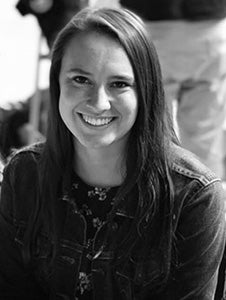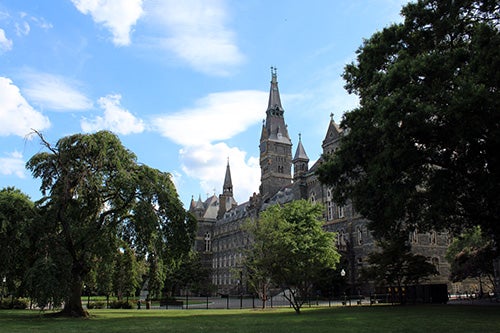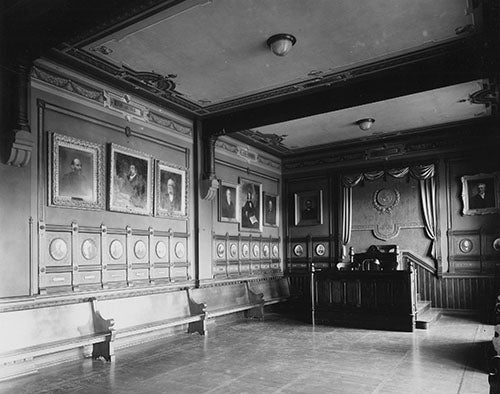December 1, 2020
Last month Cassandra Berman, Archivist for the Maryland Province Archives, sat down (virtually) with volunteer Kathleen Oakley to talk about her project this summer in the Booth Family Center for Special Collections.
What do you study, and what was the project you were working on for the Booth Family Center for Special Collections?
 In the summer of 2020, I was fortunate to work with the Booth Family Center for Special Collections and Professor Adam Rothman of the Georgetown Slavery Archive to commemorate the history of slavery at Georgetown University by creating a walking tour of significant sites on and near campus. At Skidmore College, I study American Studies and Dance. This project provided me with the opportunity to expand upon my interest in American history and culture by studying a new setting located close to my home.
In the summer of 2020, I was fortunate to work with the Booth Family Center for Special Collections and Professor Adam Rothman of the Georgetown Slavery Archive to commemorate the history of slavery at Georgetown University by creating a walking tour of significant sites on and near campus. At Skidmore College, I study American Studies and Dance. This project provided me with the opportunity to expand upon my interest in American history and culture by studying a new setting located close to my home.
Was this project your first exposure to public history and archival materials? What had your knowledge of archives and primary sources been prior to the project?
Prior to working on this project, I had no significant experience in these areas. I had seen materials in Skidmore’s special collections and archives a number of times, but I never had the opportunity to work with them directly. I have, however, always had an interest in how we can tell stories through primary source material, and I was excited to explore the digital archives for this project.
What was it like to work on such an important topic? How did this challenge your understanding of history, and of Georgetown?
This project was of particular significance with the rising national discourse on systemic racism and injustice in America following police violence against Black individuals. I think that Georgetown’s work on slavery, memory, and reconciliation serves as a reminder of the deep, often overlooked, historical ties many American institutions have to slavery and institutionalized racism. I hope this work challenges other institutions to reexamine their past and use this awareness to build an inclusive, just future. Similar initiatives should be undertaken at a variety of educational institutions. Many private schools in the Maryland-D.C.-Virginia area, for example, were founded in reaction to the 1954 Brown v. Board of Education decision declaring that racial segregation in public schools was unconstitutional; these schools attempted to uphold the segregation of young students.

Healy Hall, commemorating Georgetown College President Patrick Healy,
who had been born into slavery in 1834.
How did you approach this project given COVID-19 restrictions? Did this present any new opportunities for approaching the project creatively?
This project was completed fully remotely to accommodate COVID-19 safety guidelines. Meetings were held over Zoom, and the only access I had to campus was to photograph the sites themselves. While it was strange to work on an archival project without ever seeing the physical archives, the unusual situation pushed me to approach the project creatively. I wanted to design a walking tour that was engaging and fully accessible to accommodate our new, virtual world. The online setting of this project allows it to be accessed by anyone, from anywhere. I hope this expands the reach of the walking tour and the archival material on which it is based.

Philodemic Room, in which Georgetown students
debated the morality and legality of both slavery and abolition.
Has your work with archives and public history influenced your studies or your career objectives? If so, how?
This project inspired in me a new interest in archives and public history. As a senior in college, I am looking at many options for the future, including programs and careers in museum studies and archives. Regardless of what path I choose, this experience has provided me with many skills that I can use throughout my academic and professional career.
What would you like other students to know about special collections?
There are an incredible number of fascinating resources in Special Collections that put forward important details and share captivating stories that inform our understanding of America’s past, present, and future. The staff is knowledgeable and welcoming, and I hope all Georgetown students get to interact with the Booth Family Center for Special Collections.
